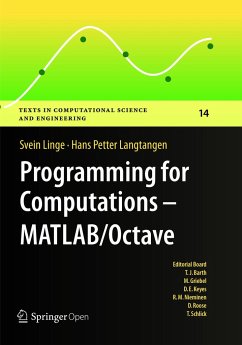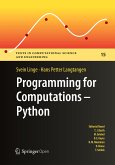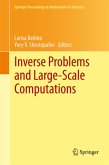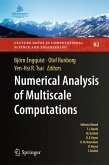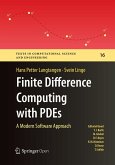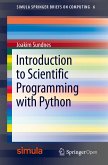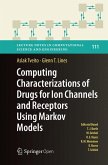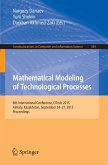This book presents computer programming as a key method for solving mathematical problems. There are two versions of the book, one for MATLAB and one for Python. The book was inspired by the Springer book TCSE 6: A Primer on Scientific Programming with Python (by Langtangen), but the style is more accessible and concise, in keeping with the needs of engineering students. The book outlines the shortest possible path from no previous experience with programming to a set of skills that allows the students to write simple programs for solving common mathematical problems with numerical methods in engineering and science courses. The emphasis is on generic algorithms, clean design of programs, use of functions, and automatic tests for verification.
"Each chapter offers numerical analysis problems to be solved. The authors walk the reader through the solution, using MATLAB source code to solve each problem, and provide the mathematical formulas for each problem presented. ... The presentation is done well; it is easy to follow and pedagogically sound. The development of good code is stressed throughout the text. The examples presented are interesting to a broad audience." (Robert M. Lynch, Computing Reviews, February, 2017)
"This book is intended for novice programmers, especially students, teachers, engineers and scientists from areas related to mathematics and numerical mathematics. ... each treated concept is illustrated and explained in detail by means of working examples. On the basis of exercises, the reader is given the opportunity to deepen acquired knowledge. ... The clear presentation and the large number of concrete examples, often with a graphical output, make this book ideally suited for self-study and ensures a quick success." (Stefan Meyer, zbMATH 1350.68002, 2017)
"This book is intended for novice programmers, especially students, teachers, engineers and scientists from areas related to mathematics and numerical mathematics. ... each treated concept is illustrated and explained in detail by means of working examples. On the basis of exercises, the reader is given the opportunity to deepen acquired knowledge. ... The clear presentation and the large number of concrete examples, often with a graphical output, make this book ideally suited for self-study and ensures a quick success." (Stefan Meyer, zbMATH 1350.68002, 2017)

